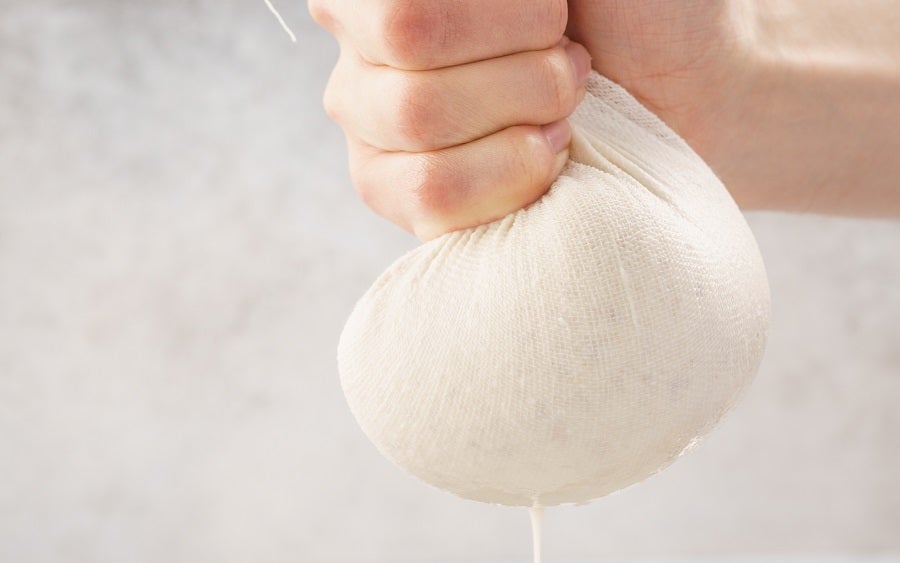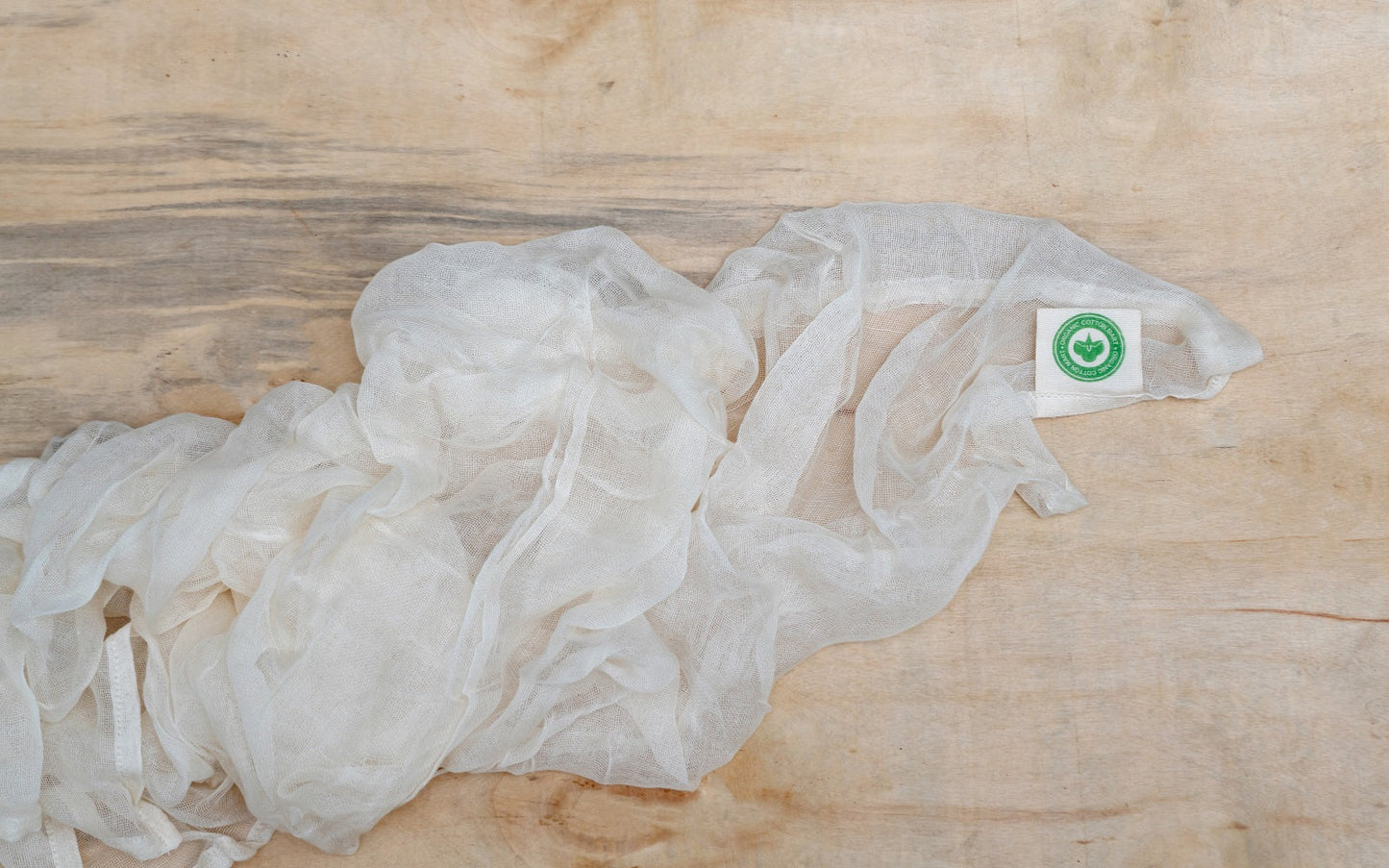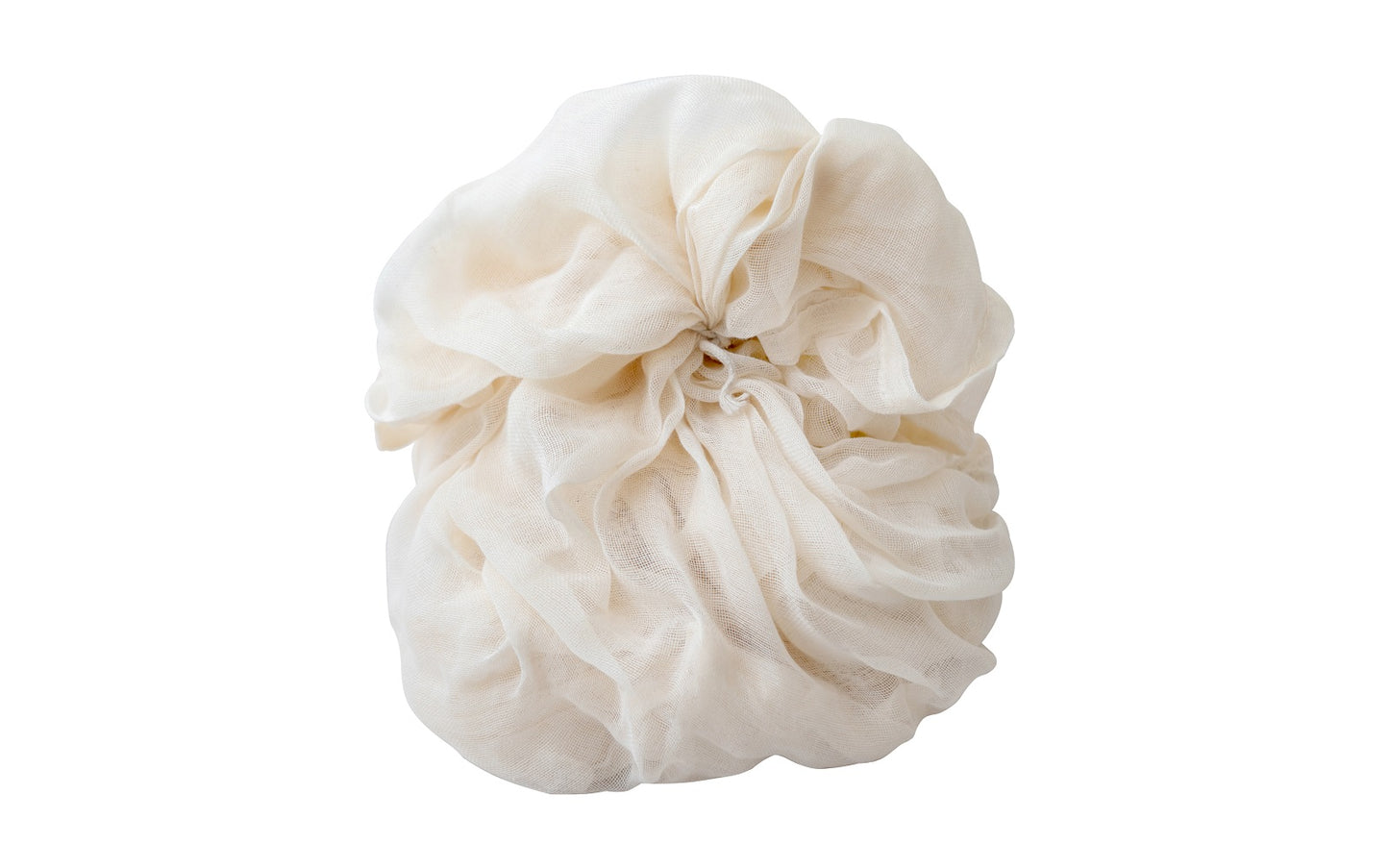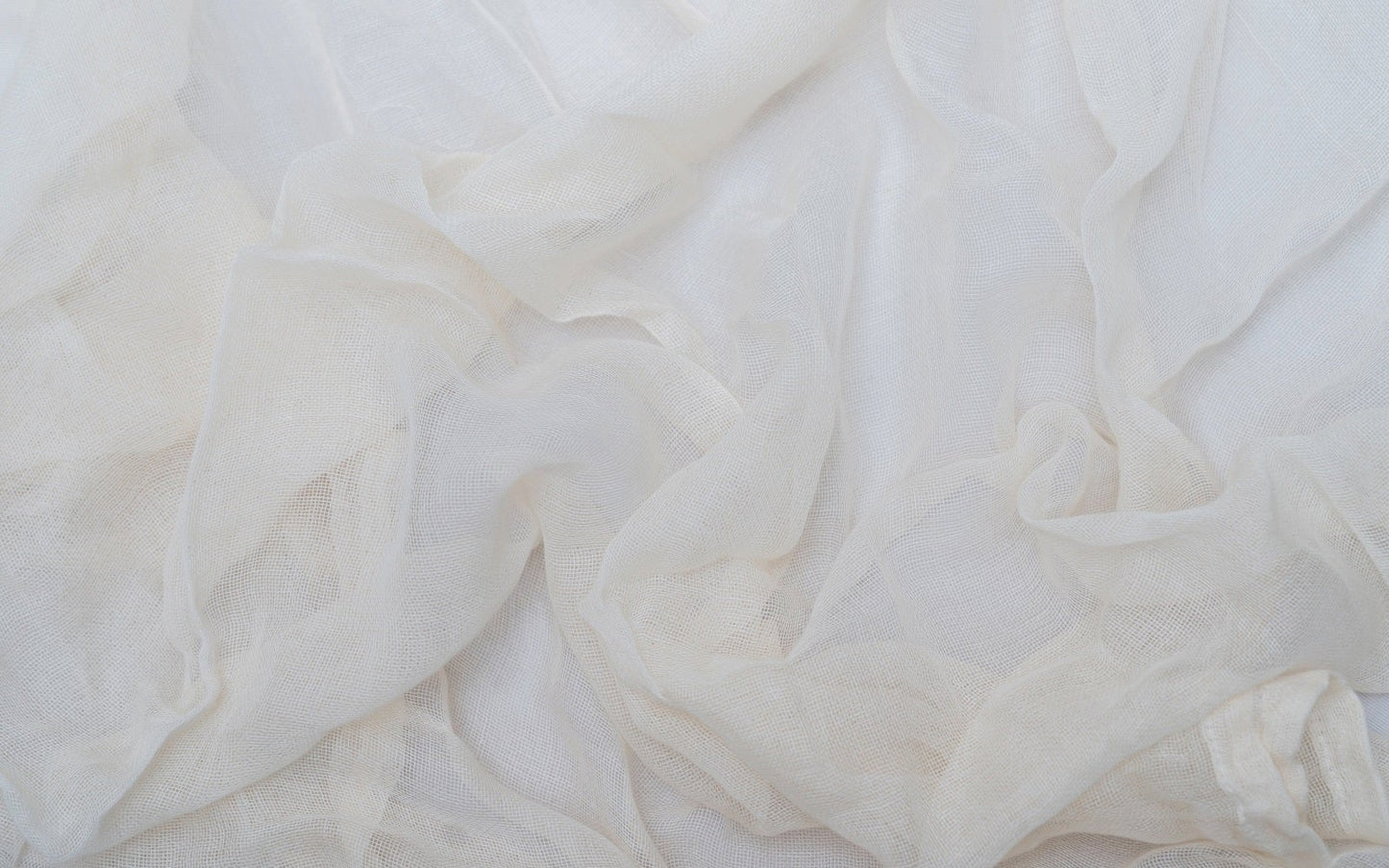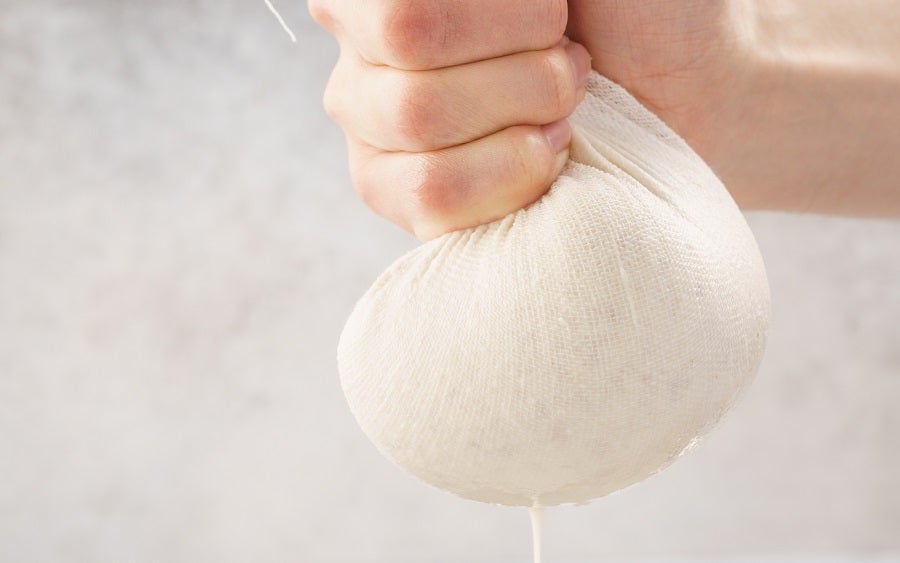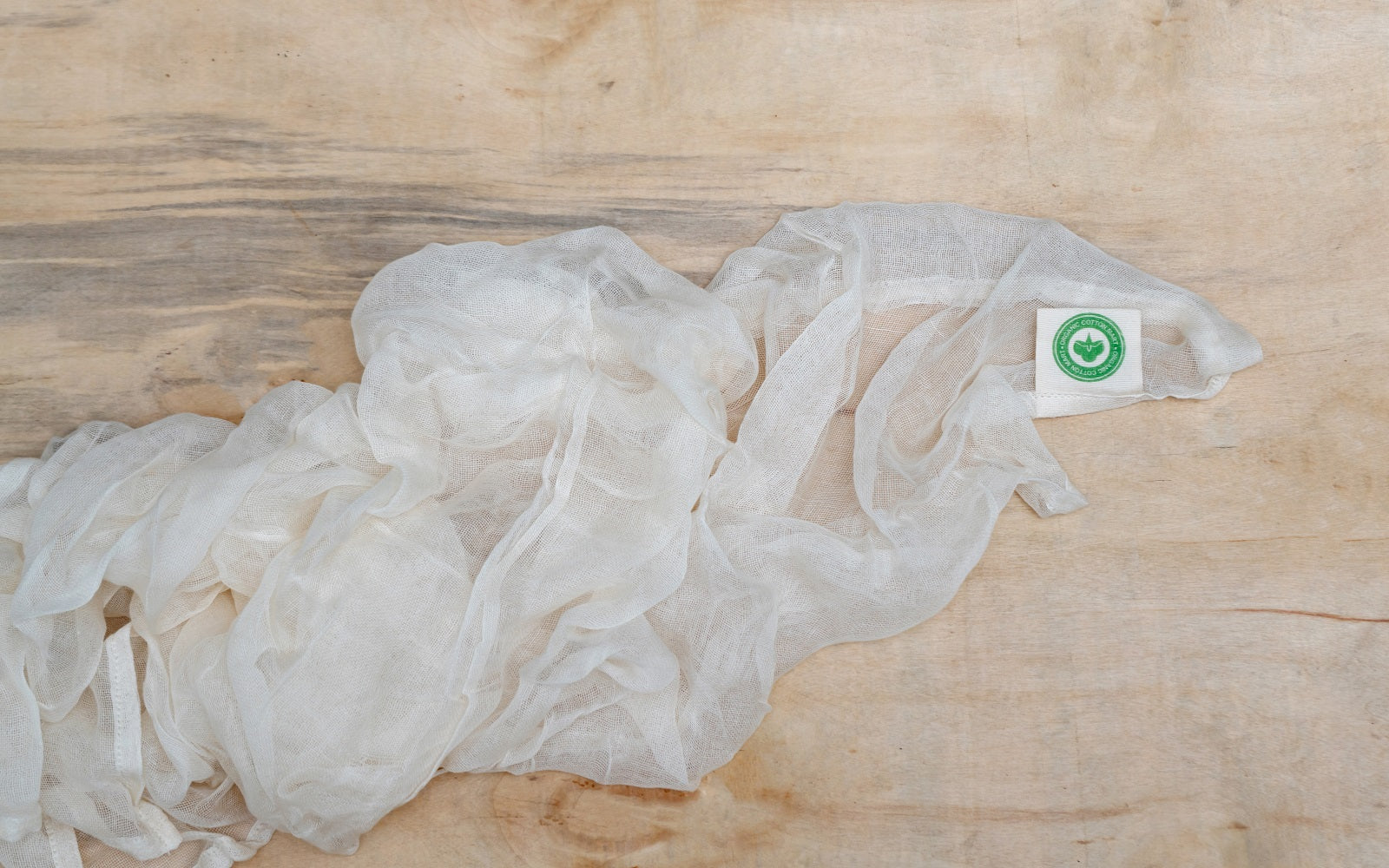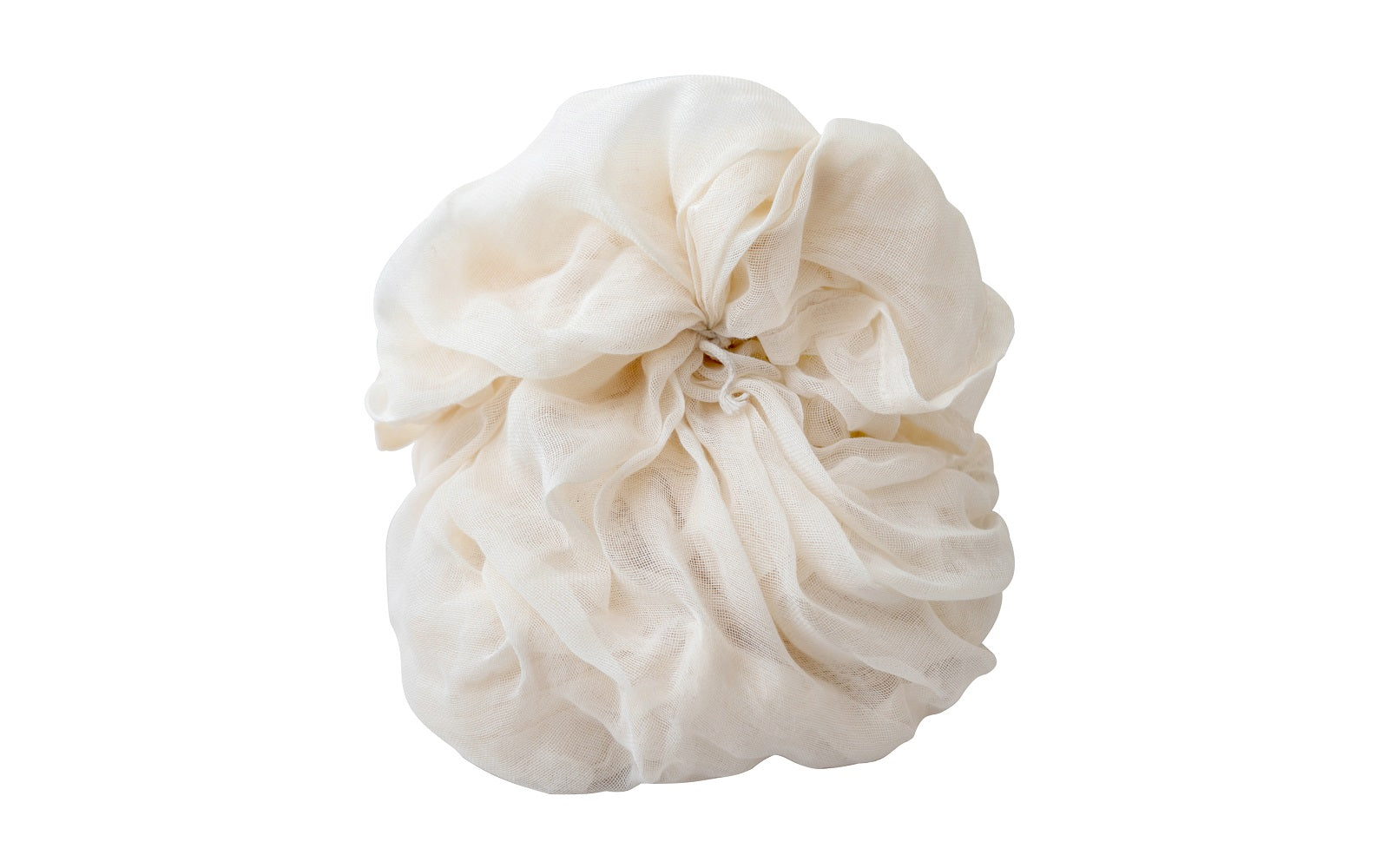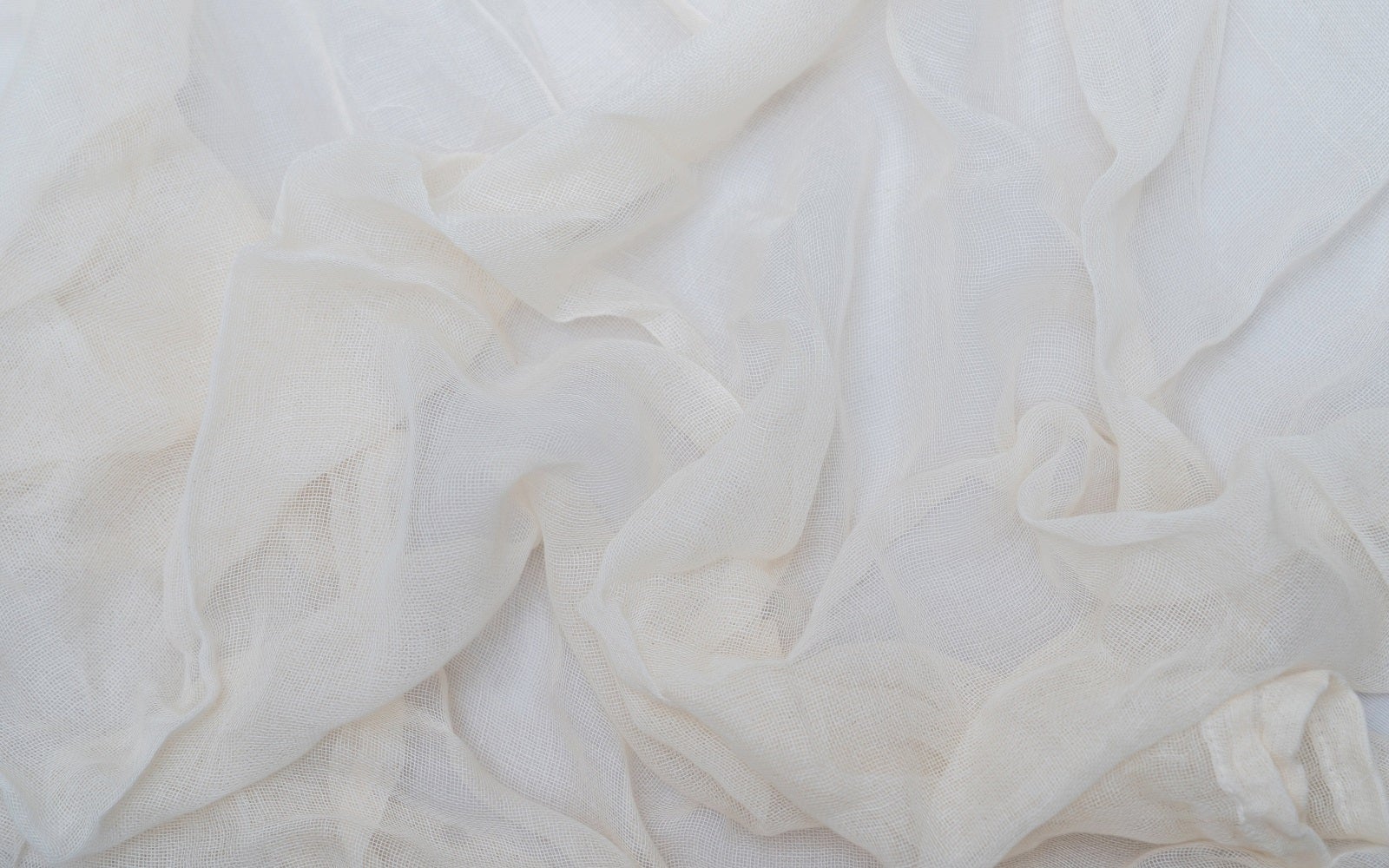USING CHEESECLOTH FOR HOMEMADE CHEESE
Cheesecloth gained its stardom for its lightweight and breathable texture that allowed aging cheese to breathe while staying protected with curds held firmly together. The gauzy material is wrapped around cheese wheels to help the aging process or used to hang cheese curds.
The more whey separated from the curdled mixture, the harder the cheese, and vice versa for softer cheese. Most often, cheddar is aged through bandaging with a cheesecloth wrap, but ricotta, farmer’s (also known as fresh), queso blanco, quark, paneer, and goat cheese can also be made with help from the breathable fabric.
Soaking cheesecloth in white vinegar and wrapping it around stored cheese is a simple way to protect the cheese from growing mold.
COTTON CHEESECLOTH FOR COOKING
While cheesecloth is the go-to for anyone looking to make their cheese, it also comes with a wide range of uses in the kitchen. Our organic cheesecloth is well suited for cooking, baking, basting, fermenting, and straining.
The culinary possibilities of unbleached cheesecloth are endless! Using cheesecloth for cooking is a great option for any commercial or home cook. The gauzy material lends itself well to cooking with poultry and can be used for basting, resulting in incredibly tender chicken. Simply douse the cloth in your go-to basting mix and wrap it around the poultry or turkey for your Thanksgiving dinner. It’s that simple!
For plant-based diets, cheesecloth works wonders for making your own tofu. Similar to the cheese-making process, tofu can be made using a cheesecloth strainer by separating the curdled mixture and whey over a bowl.
Have a recipe that calls for herbs? Avoid stems from getting in your favorite soups by bundling herbs in a cheesecloth wrap. The unbleached cheesecloth will allow for the deep herbal flavors to soak into your stew while keeping stems out of your bowl.
Another great option for using cheesecloth for cooking is creating a cheesecloth strainer when a recipe calls for a fine sieve. Our organic reusable cheesecloth is made with an extra-fine weave, offering a Grade 90 straining cloth with 44 x 36 threads per inch – a convenient substitute for an extra fine sieve.
Cheesecloth is an extra handy tool when making jams and can be used to separate those pecky seeds from your favorite jelly.
OTHER VERSATILE HOUSEHOLD USES
The fabric is incredibly versatile and alongside a long list of cooking uses, can be used for many practical tasks.
For tea fans, cheesecloth can make great do-it-yourself teabags. Simply gather your favorite ingredients, bundle them up in cheesecloth, and secure the bag. It’s an easy way to enjoy a homemade cup of tea without the grit known to loose-leaf teas.
Coffee lovers short of filters can also utilize organic cheesecloth for making a hot cup of joe in the morning.
Pesky summertime bugs can be kept at bay by covering fruit and other countertop foods with a layer of cheesecloth.
Unbleached cheesecloth can even be used to cover up injuries and protect open wounds from bacteria. After medical use, reusable cheesecloth can be sanitized by boiling in water.
Is Cheesecloth Reusable?
Yes, cheesecloth is reusable. You can wash a used cheesecloth by hand, dry it on the counter and reuse it.
HOW TO CLEAN YOUR CHEESECLOTH
Cleaning reusable cheesecloth is a simple process: 1. Rinse immediately after use 2. Wash thoroughly in the sink or alone in the washing machine, avoiding the use of detergents and fabric softeners 3. Use whey or white vinegar to remove straggling curds or leftover material 4. Boil and hang cheesecloth for extra sterilization 5. Once dry, fold and store in a sealed container until next use.
CHEESECLOTH GRADES
Before strainers, cheesecloth was the go-to kitchen tool for straining. The versatile material originated in Bangladesh and made its way to Europe through trade and from there, traveled across the ocean to the Americas.
Cheesecloth comes in at least seven different grades, from open weave to extra fine distinguished by thread count. The difference in grade will result in finer straining capacities for each type of cheesecloth. Common cheesecloth grades include:
- Grade #10: 20 x 12 threads per inch
- Grade #40: 24 x 20 threads per inch
- Grade #50: 28 x 24 threads per inch
- Grade #60: 32 x 28 threads per inch
- Grade #90: 44 x 36 threads per inch
Cheesecloth is a loosely woven cotton cloth primarily used for making cheese, though many cooks boast its versatility and utilize the material when making almond milk, ketchup, fruit drinks, and an assortment of other homemade goodies. The lightweight material allows for air and liquids to flow through the weave while its durable surface keeps food secure. Organic cotton cheesecloth is the perfect addition to any kitchen.
We guarantee the quality of every item and promise fast delivery. If for any reason you are not satisfied with the product you can always return it for a full refund. We will even pay for the return shipping.
This cheesecloth is made in India using the finest and locally grown organic cotton. The fabric is organic cotton.
Looking to purchase more than 25 cheesecloths? Please check our Bulk Cheececloth.
